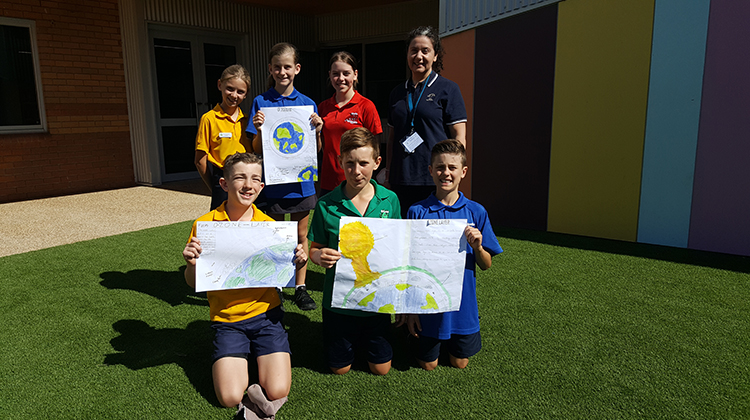Students March into the Future With Smaller (Carbon) Footprints

Goal number 13 of the UN Sustainable Development Goals (SDG) is to act against climate change and its impacts. It’s a mammoth task, and year six students at Patterson Lakes Primary School in Victoria have learned how to lend a hand.
Luke Milgate, a teacher at the school, collaborated with Dr Rosemary Fedele, an Air and Odour Scientist who works for the Environment Protection Authority Victoria (EPAV) and was able to share her expertise on topics related to the curriculum. The pair were introduced to each other through CSIRO’s STEM Professionals in Schools program.
Luke said year six students are asked to think about the interconnections between people and their environment. “With Rosemary’s background, it was a natural fit to enhance what we were learning in class,” he said.
During her first visit, Rosemary explained to the students the basic science behind the natural greenhouse effect and the enhanced greenhouse effect and led an activity to show them how to use an online carbon footprint calculator which allows students to calculate their impact on the environment.
Reduce, Reuse, Recycle
In the discussions that followed, Rosemary and the students also addressed UN SDG 12: responsible consumption and production patterns. This saw them investigate how they might reduce their carbon footprint by consuming less.
“They had a wealth of ideas, from small everyday actions to longer term actions and decisions,” Luke said.
“These included growing our own veggies, turning off lights, appliances and computers when not in use and eating less meat. Using a bicycle, car-pooling, or using public transport when possible, and not travelling overseas as often.”
A smaller group of environment leaders, who have been mentored by Rosemary, will also present a hands-on lesson with the junior classrooms. This will be done during National Science Week 2022. They will share what they have learned about carbon footprints.
Rosemary said she was impressed by the lesson plan the students came up with.
“They decided to start their lesson with a play about the difference between weather and climate,” Rosemary said.
“One student will play the role of ‘the weather’ and talk about what the weather is while acting stormy, then changing to sunny, and other weather behaviours, and so on. Another student will be ‘the climate’ and talk about temperature over a long period of time (like 30 years or more) while getting hotter and hotter, like they have a fever.
“I loved this idea – they took a scary complex science topic and made it fun!”
Making STEM Accessible for Curious Minds
Working out how to simplify complex science has been one of the challenges Rosemary has enjoyed most out of her involvement in the STEM Professionals in Schools program and she has enjoyed the opportunity to benefit from Luke’s expertise as an educator.
“Luke gives me advice and helps plan activities. His guidance and feedback give me confidence that I’m on the right track. I find it works well as I’m not a teacher,” Rosemary said.
“I really enjoy preparing for classes. And then having discussions with students is so much fun. One memorable question from a student was: what happens to the ozone layer when a rocket goes through it? I thought it was such a great question.
“At the end of it all seeing students understand something new about the environment, and knowing I helped them do that is really rewarding. I hope they can develop their curiosity about the environment and a better understanding of the complex scientific concepts we discuss.”
STEM Professionals in schools
The STEM Professionals in Schools program creates partnerships between teachers and STEM professionals to bring real world knowledge into Australian classrooms.
“Rosemary’s enthusiasm has been contagious from her first encounter with the students,” Luke said.
“Having her in the classroom as our resident scientist has helped me cover this topic with much greater confidence. It has been of great benefit to our students, as well as the teachers.”
STEM Professionals in Schools is open to applications from educators and STEM professionals from industry, research and academia. The Australian Government Department of Education supports this program.
First published on CSIROScope.